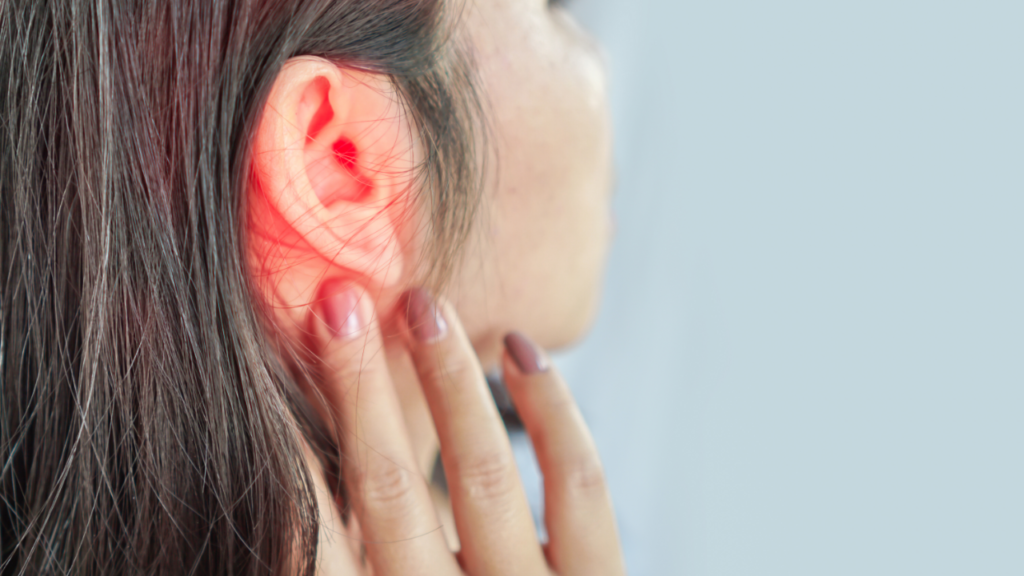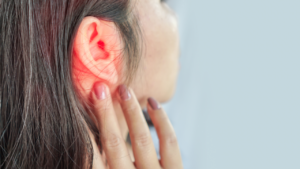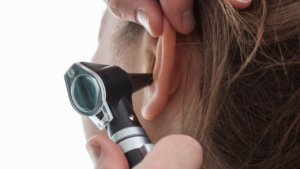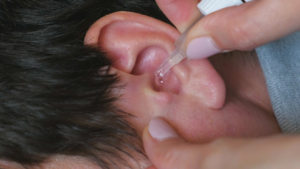
Are you experiencing ear discomfort or a decrease in hearing ability? You may be dealing with ear wax buildup. In this article, we will explore the causes of ear wax blockage, the symptoms to look out for, and the potential effects such as hearing loss, dizziness, ear pain, and ringing in the ears. We will also discuss how to safely remove ear wax blockage, including home remedies and when to seek medical attention. Stay tuned to learn more about managing ear wax buildup effectively.
Key Takeaways:
- Listen for changes in your hearing, such as muffled or decreased ability, to determine if your ear is blocked with wax.
- Look for visible blockages or discharge in the ear canal to identify if ear wax is causing discomfort or pain.
- If experiencing symptoms like dizziness, fullness/pressure, or itching in the ear, it may be a sign of ear wax blockage and prompt removal is recommended.
What Causes Ear Wax Buildup?
Ear wax build-up, known medically as cerumen impaction, occurs when earwax accumulates in the ear canal, leading to blockage.
Earwax, a yellowish waxy substance produced by the ear glands, plays a crucial role in protecting the ear canal from dust, bacteria, and other foreign particles. When this wax is not naturally expelled from the ear, either due to factors like narrow ear canals or excessive hair growth in the ear canal, it can build up and harden, causing a blockage.
Improper cleaning techniques, such as using cotton buds that push the wax further into the ear canal instead of removing it, can also contribute to cerumen impaction. Frequent use of earplugs or headphones can prevent the natural migration of earwax out of the ear canal, leading to accumulation.
What Are the Symptoms of Ear Wax Blockage?
Symptoms of ear wax blockage can manifest in various ways, including earache, hearing loss, and a sensation of fullness in the ear.
Along with these common signs, individuals with ear wax blockage may also experience dizziness, ear discharge, rining in the ear, coughing, or even difficulty hearing properly. It is crucial to address these symptoms promptly as untreated ear wax blockage can lead to more severe issues like ear infections or tinnitus. Seeking medical attention and avoiding the use of cotton swabs or other objects to clean the ears is essential in managing ear wax build-up.
Can Ear Wax Blockage Cause Hearing Loss?
Ear wax blockage can impact hearing by obstructing the ear canal and interfering with sound conduction, potentially leading to temporary or partial hearing loss.
When ear wax accumulates and hardens, it can form a blockage that hinders the natural process of sound transmission within the ear. This blockage may cause discomfort, ringing in the ears, or even vertigo in some individuals. Untreated ear wax buildup can lead to infections or damage to the eardrum, which can have more severe consequences on hearing health. It is crucial to seek professional help for safe and effective removal of excess ear wax to avoid complications and maintain optimal hearing function.
Can Ear Wax Blockage Cause Dizziness?
In some cases, ear wax blockage can cause dizziness or vertigo due to the disruption of the vestibular system within the ear.
When excess ear wax accumulates in the ear canal, it can put pressure on the eardrum, affecting the normal functioning of the inner ear’s balance mechanisms.
This pressure can lead to confusion in the signals sent to the brain, resulting in a sensation of dizziness or spinning, commonly known as vertigo.
When the vestibular system is compromised, it may impact a person’s spatial orientation and coordination, contributing to feelings of imbalance and unsteadiness.
Can Ear Wax Blockage Cause Ear Pain?
Ear wax blockage can lead to ear pain or discomfort, especially if the blockage causes pressure build-up in the ear canal.
When ear wax accumulates and obstructs the ear canal, it can prevent sound waves from reaching the eardrum properly, resulting in muffled hearing.
This blockage can also create a damp environment conducive to bacterial growth, increasing the risk of infection.
If left untreated, ear wax blockage can lead to further complications such as vertigo, ringing in the ears, or even temporary hearing loss.
Can Ear Wax Blockage Cause Ringing in the Ears?
Ear wax blockage may contribute to tinnitus, a condition characterized by ringing or buzzing sounds in the ears, as the blockage affects the ear’s normal functions.
This build-up of earwax can impede the transmission of sound waves, leading to auditory processing disruptions that manifest as tinnitus symptoms. When the ear canal is obstructed by excess wax, it can distort sounds and create a sensation of ringing or buzzing in the ear. The pressure changes caused by the blockage can also trigger the auditory nerves, resulting in the brain interpreting these signals as abnormal noise. Proper management, such as gentle ear cleaning by a healthcare professional, can help alleviate these symptoms and restore normal hearing function.
How Can I Tell If My Ear Is Blocked with Wax?
Recognising if your ear is blocked with wax involves noting common signs such as decreased hearing ability, earache, and a feeling of fullness or pressure in the ear.
Individuals with ear wax blockage might experience rings of light around light sources, tinnitus (ringing or buzzing in the ear), dizziness, or a noticeable odour emanating from the ear canal.
Visual inspection may reveal a build-up of wax near the ear canal entrance. Some individuals may also notice discharge from the ear or a cough reflex triggered by pressure changes.
If you suspect an ear wax blockage, it is crucial to seek advice from a healthcare professional for appropriate management.
Is There a Visible Blockage in the Ear Canal?
A visible blockage in the ear canal may indicate the presence of excess earwax or cerumen accumulation, requiring attention to prevent further impaction.
When earwax builds up within the ear canal, it can lead to discomfort, hearing difficulties, and even ear infections. Evaluating the blockage is essential to determine the appropriate course of action. Different methods, such as ear irrigation or gentle removal by a healthcare professional, may be used to clear the obstruction effectively. Ignoring the blockage could potentially result in complications and discomfort. Seeking timely evaluation and management for earwax blockage issues is crucial for maintaining optimal ear health.
Is There a Feeling of Fullness or Pressure in the Ear?
Sensing fullness or pressure in the ear can be a notable indication of ear wax blockage, prompting the need for assessment by a healthcare provider.
When excess earwax accumulates and hardens in the ear canal, it can lead to a feeling of fullness or pressure, impacting one’s hearing and overall comfort. The discomfort caused by earwax blockage may also result in earache, ringing in the ears (tinnitus), or even vertigo in some cases. It is essential to avoid inserting objects into the ear to clean the wax as this can push it deeper and worsen the blockage. Seeking professional guidance ensures proper diagnosis and safe removal of the earwax blockage.
Is There a Decrease in Hearing Ability?
Experiencing a decrease in hearing ability may indicate ear wax blockage interfering with sound transmission, necessitating evaluation by a healthcare provider.
When ear wax builds up in the ear canal, it can lead to blockages that obstruct the passage of sound waves into the ear drum. This impeded transmission can result in difficulty hearing sounds clearly or even lead to temporary hearing loss. It is crucial to seek prompt medical attention to address this issue as untreated ear wax buildup may cause discomfort, dizziness, or, in severe cases, contribute to more serious auditory complications.
Is There an Itchy Sensation in the Ear?
An itchy sensation within the ear may be a sign of ear wax accumulation or irritation, warranting examination by a healthcare provider.
When ear wax builds up, it can cause discomfort and lead to symptoms such as itching, ear pain, and even temporary hearing loss. It is essential to address these issues promptly to prevent complications or infections from arising. Proper diagnosis by a professional can determine the underlying cause of the itching and guide appropriate treatment. Sometimes, attempting to remove ear wax at home can worsen the situation, so seeking medical advice is crucial for effective management of ear wax-related problems.
Is There Discharge or Odour Coming from the Ear?
Discharge or odour emanating from the ear can indicate the presence of infection or complications related to ear wax blockage, necessitating medical evaluation for appropriate management.
Ear discharge, often accompanied by a foul odour, should never be ignored as it can be a sign of a more serious issue affecting the ear canal or eardrum. When left untreated, these symptoms can lead to further complications, such as hearing loss or even a potential risk of damage to the ear structures.
This highlights the importance of seeking prompt medical attention from an ENT specialist to accurately diagnose the underlying cause of the discharge or odour. Proper evaluation may involve a physical examination, imaging studies, or even laboratory tests to determine the most suitable treatment plan.
How Can I Safely Remove Ear Wax Blockage?
Safely removing ear wax blockage involves utilising appropriate methods and tools, such as ear drops, irrigation, or manual extraction by a healthcare provider.
In terms of managing ear wax, it’s crucial to remember that the ear is a delicate and sensitive part of the body.
Ear drops can be a gentle way to soften the wax, making it easier to naturally exit the ear canal.
Irrigation is another common method using warm water to flush out excess wax, but it’s essential to perform this technique carefully to avoid damaging the eardrum.
Seeking help from a healthcare provider for manual extraction is advisable if you experience severe blockage or discomfort.
What Are Some Home Remedies for Ear Wax Removal?
Home remedies for ear wax removal include using warm olive oil, hydrogen peroxide drops, or over-the-counter ear wax softeners to aid in wax dissipation.
Many individuals prefer utilising olive oil due to its gentle and natural properties that can help soften and loosen ear wax.
Hydrogen peroxide is another popular option, known for its effervescence that can assist in breaking down the wax buildup.
Over-the-counter ear drops are specifically formulated to provide relief from ear wax accumulation by softening the wax for easier removal.
When Should I Seek Medical Attention for Ear Wax Blockage?
Consulting a healthcare provider for ear wax blockage is advisable if home remedies are ineffective, symptoms worsen, or there are underlying health conditions affecting ear health.
While occasional ear wax build-up is normal and can often be managed at home, certain situations necessitate professional evaluation and treatment. If you experience sudden hearing loss, persistent ear pain, dizziness, ringing in the ears, or discharge from the ear, it is crucial to seek medical attention promptly. These symptoms could indicate a more serious issue, such as an ear infection or a perforated eardrum.
Ignoring such symptoms and attempting to resolve them independently can potentially lead to further complications and worsen the condition. Professional intervention not only ensures proper removal of the blockage but also helps in identifying any underlying issues that may require specific medical management.






